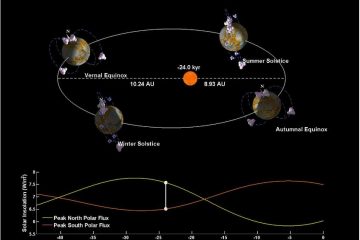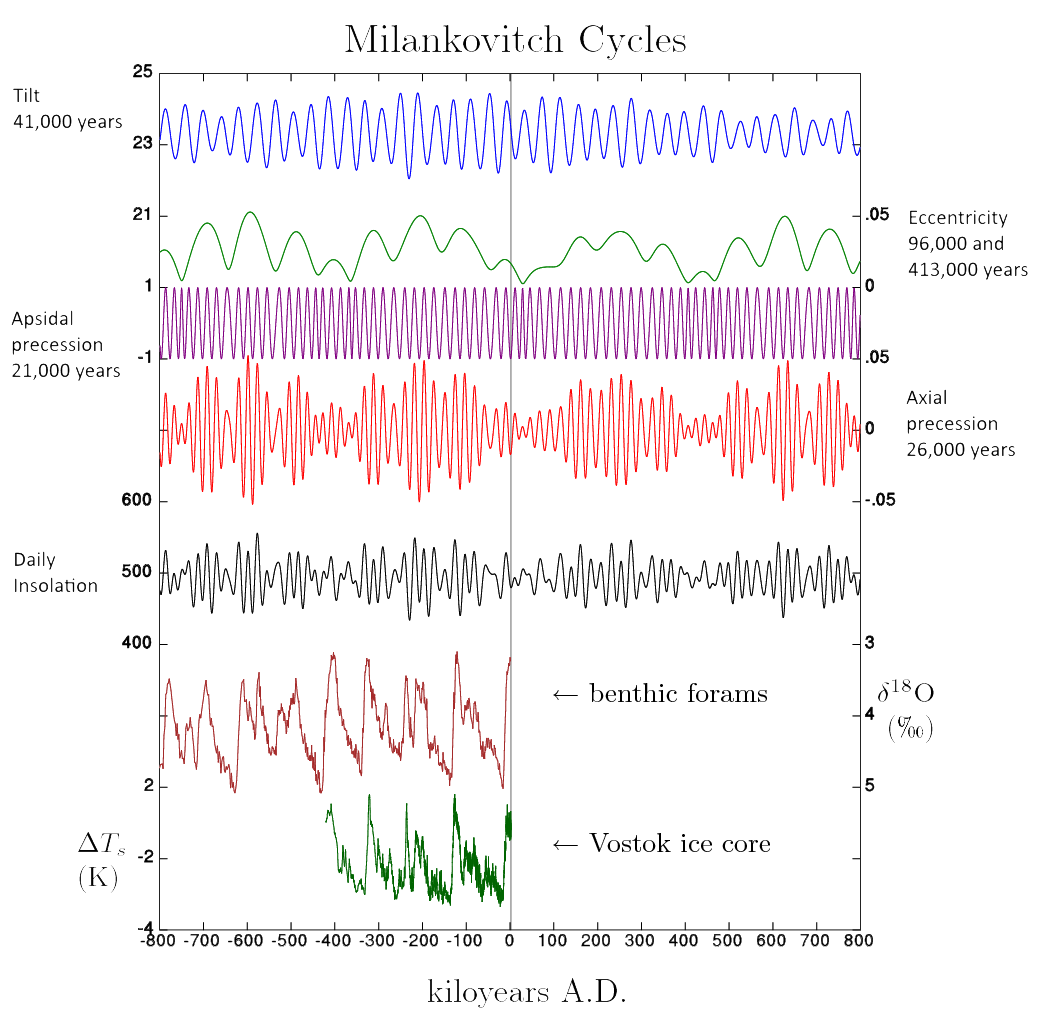Milankovitch Cycles and Climate: Part III – Putting it All Together
In parts I and II, we looked at axial obliquity, axial precession, apsidal precession, orbital eccentricity and orbital inclination, and how their cycles can affect the climate. In this installment of the series, we’ll look briefly at how these cycles look when combined, and then discuss one of the most prominent unsolved problems raised by the theory: The 100,000 Year problem.
Notice that the peaks and valleys in temperature are roughly periodic, and that with the possible exception of apsidal precession, there are slight fluctuations in the periods and amplitudes of these orbital cycles. One reason for this has to do with fluctuations in solar output, but another likely reason has to do with the very causes of these orbital cycles themselves: namely, these cycles are driven by mutual gravitational perturbations between the Earth, Sun, Moon, and to a lesser extent, Jupiter and the other planets in the solar system (Borisenkov 1985, Spiegel 2010) . (more…)

